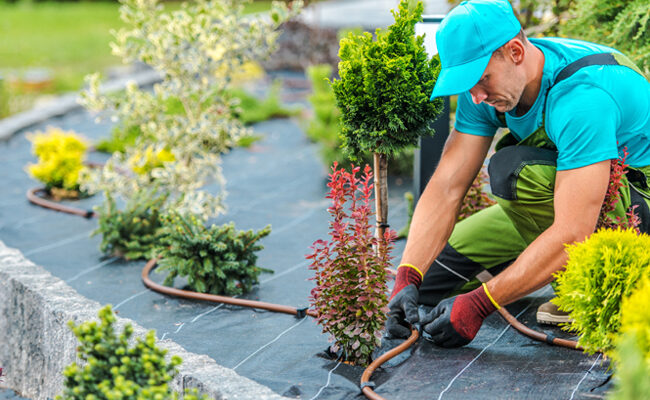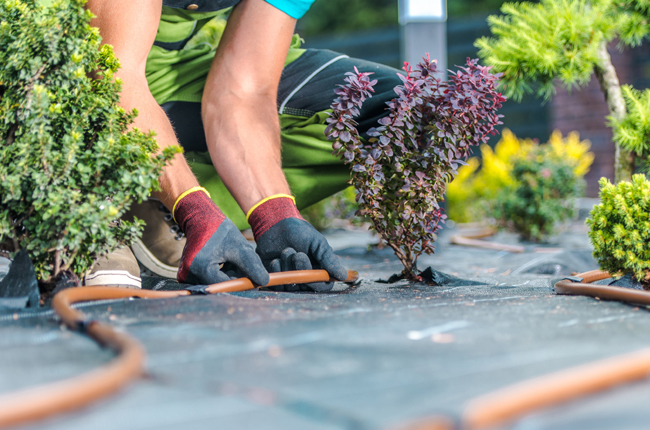
Watering plants feels like it’s supposed to be simple, but it isn’t. If it’s done right, it will be efficient, and you won’t waste irrigation resources. You’ll have a beautiful and lush garden or yard, too. But, if it’s done wrong, you’ll have wasted your money and possibly killed your plants.
Did you know that a significant amount of the water we use at home goes to landscape irrigation? This means that if your irrigation system is poorly maintained and set up, you’re wasting water and spending more money than you should. Irrigation must also be correctly scheduled since it may affect the nutrients that are supposed to be absorbed from the water. When this is scheduled poorly, the water just evaporates and isn’t absorbed by the plants.
In this article, you’ll learn about all the dos and don’ts of landscape irrigation. Hopefully, it will help you save yourself some money, keep your plants healthy and pretty, and do the environment a favor.
Do’s Of Landscape Irrigation
Here are the things to do to improve your landscape irrigation:
Do Set Your Irrigation System Up Efficiently
It’s important to consider water distribution when you design and set up your irrigation system. It’s also advisable that you hire and consult with professionals, such as Ferguson’s Plumbing Group, to set up your irrigation system since they’re trained experts.
Furthermore, this allows you to buy just the right number of sprinklers, use the right amount of water, and cover all your plants that need to be watered. Ignoring water distribution will cause overspray and runoff, two common side effects of poor irrigation systems that cost you money in the long run. In addition to this, you’ll also waste thousands of gallons of water and ruin your landscaping.
Do Keep Your Irrigation System Maintained and Up-To-Date
Some of the biggest culprits of money and water lost to irrigation are outdated or poorly installed systems or sprinklers that weren’t made for your plants. These usually lead to leaks and broken seals, which can waste water. For this reason, you must do a regular maintenance check on your system. Make sure that they’re not damaged and that they’re up-to-date. Finally, you should also remember to check and regulate the water pressure of your sprinklers and pop-up sprays as it affects their performance and the amount of water being used.
Do Know Your Plants’ Needs
Some plants simply need more water than others. For this reason, you must also consider just how much water your plants need. Otherwise, you might find yourself overwatering them, costing you money, water, and your beautiful plants. It’s also worth considering if your plants are suited for the local climate since they might require so much more water and contribute to wasted water. If you’re on a budget, then it might be wise to only use local plants.
Don’ts Of Landscape Irrigation

Below are the things to avoid in landscape irrigation:
Don’t Schedule Irrigation When It’s Hot
One of the culprits for water being wasted is evaporation. This problem occurs often. However, it can be mitigated by scheduling your irrigation right. A good rule of thumb is to avoid watering your plants in the afternoon when it’s scorching hot. That way, a good amount of the water won’t just evaporate instead of being absorbed by your plants. Nonetheless, note that you might find yourself watering your plants when it’s constantly hot, and that’s okay—however, schedule watering your plants in the morning.
Don’t Water Consistently and Frequently
The water needs of your plants may change based on the season. That being the case, ensure that you don’t overwater them. In fact, watering too much may cause shallow roots and weeds, disease, and fungus to grow. You can invest in some soil moisture sensors to signal your system when it’s time to water the plants.
Don’t Ignore the Soil
Aside from your plant’s specific water needs and the climate, you also need to consider the soil’s water-holding capacity. To know a soil’s water-holding capacity, check how much sand, silt, and clay it has. For example, sandy soils usually can’t hold more than 0.75 inches of water per foot of soil depth. When exceeded, plants fail to absorb nutrients, especially fertilizers, because mobile nutrients will leach below the plants’ root system.
Conclusion
Knowing all these things, one can conclude that landscape irrigation is no easy feat. Nonetheless, it can be done when you have the right system and strategy, saving you money and water. You simply must have an excellent irrigation system, so recall all the factors discussed above and consider them when designing your landscape irrigation.
Leave a Reply